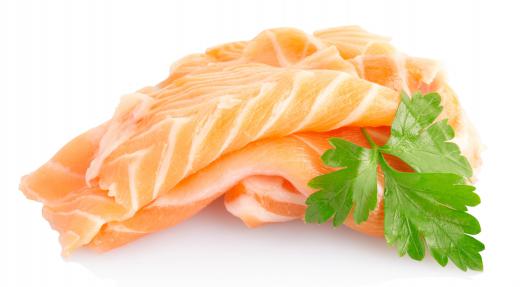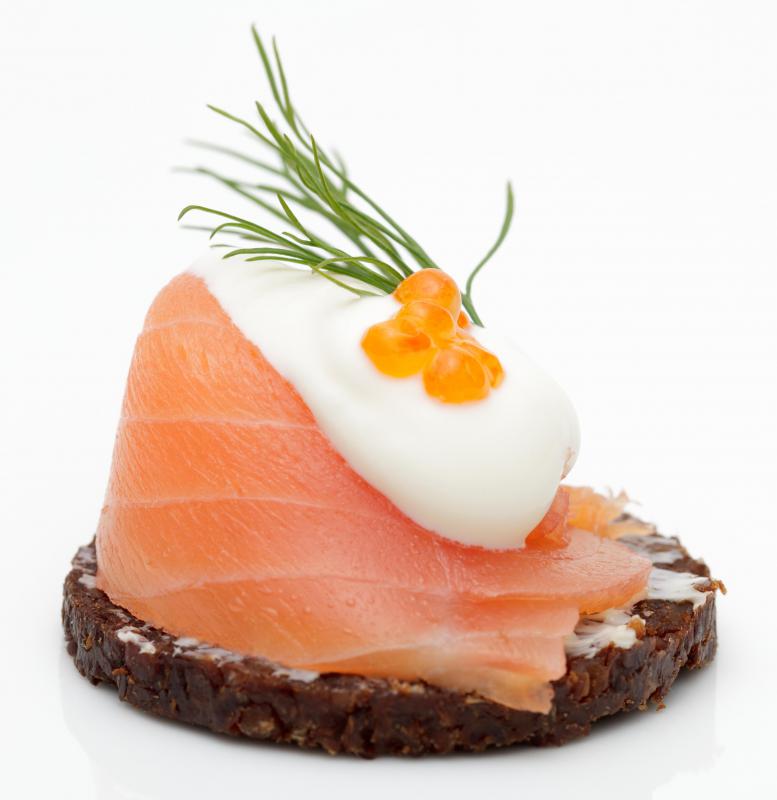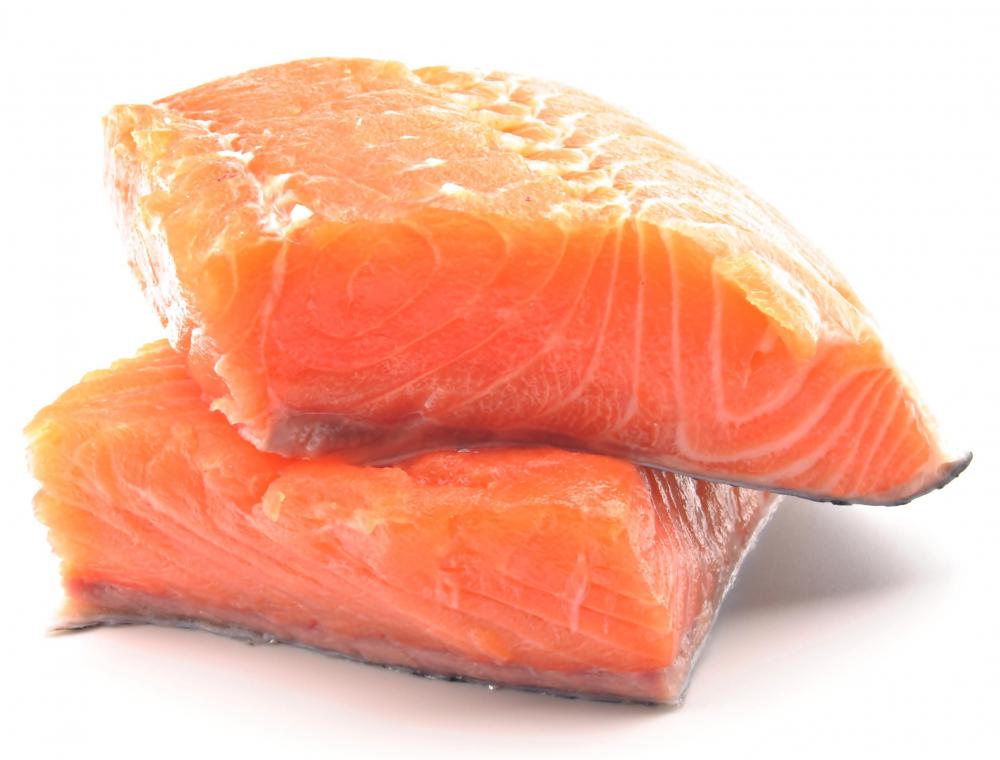At AllThingsNature, we're committed to delivering accurate, trustworthy information. Our expert-authored content is rigorously fact-checked and sourced from credible authorities. Discover how we uphold the highest standards in providing you with reliable knowledge.
What is a Pink Salmon?
A pink salmon is one of many types of fish that have the scientific name of Corhynchus gorbuscha and the common names of humpback salmon, humpy salmon, dog salmon and hone salmon. It is the smallest salmon in the northwest United States and western Canada, reaching an average length of 20 to 25 inches (50.8 to 63.5 cm) and an average weight of 3 to 4 pounds (1.4 to 1.8 kg). They can grow, however, grow up to 30 inches (76.2 cm) long and weigh as much as 12 pounds (5.4 kg). Pink salmon have a greenish blue metallic hue when viewed in the water from above and appear silvery in the water when viewed from below.
Almost immediately after leaving the gravel of the streams in which they hatch, they move into nursery areas and shallow sea waters. Pink salmon are called alevins, young fry or yolk-sac fry at this stage because they feed on the nutritious yolk sac from which they hatched until they can eat other foods such as plankton, some insects and larval fish while growing to the size they need to be to live in the open sea. They live at sea for approximately 18 months, after which they instinctively migrate back to the stream in which they hatched, and there they will spawn.

Male pink salmon undergo some significant changes in their physical appearance during the period of spawning. The male develops a hump on his back, from which the names of humpback salmon and humpy salmon were derived. The color of his sides changes to a reddish-yellow, and the tip of the upper jaw curves downward while the tip of the lower jaw curves upward, forming a hooked jaw appearance.

Females use their tails to dig a nest called a redd in their natal stream, in which they deposit between 1,500 and 2,000 eggs, depending on their size. One or more males immediately fertilize the eggs, and the female covers them. This process is referred to as spawning.
Approximately two weeks after spawning, the male and female pink salmon die. The pink salmon sometimes is referred to as the "bread and butter" for the fishermen of Canada and the U.S. states of Alaska and Washington because of its economic importance in those regions. Pink salmon is considered a healthy meat for people to consume and is frequently eaten fresh in certain parts of the U.S. It also is commonly sold in cans in many grocery stores in the U.S.
Frequently Asked Questions
What is unique about pink salmon compared to other salmon species?

Pink salmon, also known as Oncorhynchus gorbuscha, are distinguished by their light pink flesh and smaller size relative to other salmon species. They have a shorter life cycle of just two years, which is the shortest among Pacific salmon. During spawning, males develop a pronounced humpback, giving them the nickname "humpies."
Where can you typically find pink salmon?

Pink salmon are native to the cold waters of the Pacific Ocean and its surrounding rivers. They range from California to Alaska and across the Pacific to Russia and northern Asia. According to the Alaska Department of Fish and Game, they are particularly abundant in Alaskan waters, where they support a significant commercial fishery.
What does the diet of a pink salmon consist of?
Pink salmon primarily feed on zooplankton and small fish. Their diet consists of organisms like amphipods, copepods, squid, and occasionally smaller fish such as herring. This diet contributes to their lighter flesh color compared to the richer hues of salmon that consume more krill and shrimp.
How do pink salmon contribute to their ecosystem?
Pink salmon play a crucial role in their ecosystem by serving as a food source for a wide range of predators, including bears, eagles, and marine mammals. Their carcasses also provide essential nutrients to river ecosystems after spawning, supporting a diverse array of wildlife and contributing to the health of riparian habitats.
What are the main threats to pink salmon populations?
Main threats to pink salmon include overfishing, habitat loss due to development and logging, and climate change. Climate change, in particular, affects ocean temperatures and freshwater environments, which can disrupt their life cycles and migration patterns. Conservation efforts are essential to ensure their populations remain sustainable.
How do pink salmon reproduce, and what is their lifecycle like?
Pink salmon have a two-year lifecycle, during which they hatch in freshwater, migrate to the ocean to grow, and then return to freshwater to spawn and die. They are semelparous, meaning they spawn once and then die. Spawning typically occurs from late June to mid-October, depending on the region.
AS FEATURED ON:
AS FEATURED ON:














Discuss this Article
Post your comments